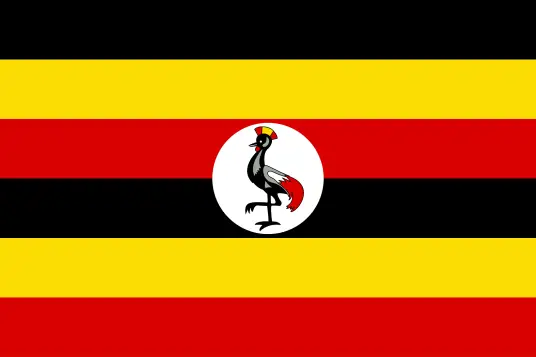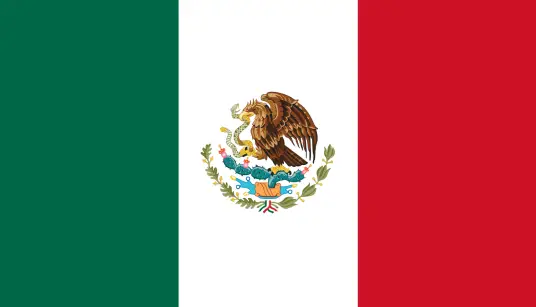
-
 Español
Español
-
 Portugues
Portugues
-
 Pусский
Pусский
-
 Français
Français
-
 Deutsch
Deutsch
-
 日本語
日本語
-
 한국어
한국어
-
 العربية
العربية
-
 Italiano
Italiano
-
 Nederlands
Nederlands
-
 Ελληνικά
Ελληνικά
-
 Svenska
Svenska
-
 Polski
Polski
-
 ไทย
ไทย
-
 Türk dili
Türk dili
-
 हिन्दी
हिन्दी
-
 Indonesia
Indonesia
-
 Melayu
Melayu
-
 Tiếng Việt
Tiếng Việt
-
 中文
中文
-
 dansk
dansk
-
 Magyar
Magyar
-
 қазақ
қазақ
-
 বাংলা
বাংলা
-
 עִברִית
עִברִית
-
 čeština
čeština
-
 Soomaali
Soomaali
-
 မြန်မာ
မြန်မာ
-
 فارسی
فارسی
-
 українська
українська
-
 norsk
norsk
-
 Gaeilge
Gaeilge
-
 беларускі
беларускі
-
 Română
Română
-
 ພາສາລາວ
ພາສາລາວ
-
 Filipino
Filipino
-
 lietuvių
lietuvių
-
 Cymraeg
Cymraeg
-
 македонски
македонски
-
 Suomalainen
Suomalainen
-
 slovenský
slovenský
-
 o'zbek
o'zbek
-
 اردو
اردو
-
 հայերեն
հայերեն
-
 Igbo
Igbo
-
 български
български
-
 سنڌي
سنڌي
-
 Shona
Shona
-
 සිංහල
සිංහල
-
 Hrvatski
Hrvatski
-
 íslenskur
íslenskur
-
 galego
galego
-
 català
català
-
 Zulu South Africa
Zulu South Africa
-
 Afrikaans isiXhosa
Afrikaans isiXhosa
-
 ಕನ್ನಡ
ಕನ್ನಡ
-
 lëtzebuergesch
lëtzebuergesch
-
 Indonésia Sunda
Indonésia Sunda
-
 basa jawa
basa jawa
-
 ગુજરાતી
ગુજરાતી
-
 Кыргызча
Кыргызча
-
 тоҷикӣ
тоҷикӣ
-
 Србија
Србија
-
 Twi
Twi
-
 Hawaii
Hawaii
-
 Cebu
Cebu
-
 नेपाल
नेपाल
-
 euskara
euskara
-
 Kurdî
Kurdî
-
 frissi
frissi
-
 יידיש
יידיש
-
 latvija
latvija
-
 slovenija
slovenija
-
 kiswahili
kiswahili
-
 ਪੰਜਾਬ
ਪੰਜਾਬ
-
 پښتو
پښتو
-
 საქართველოს
საქართველოს
-
 hua moni
hua moni
-
 bosna
bosna
-
 తెలుగు
తెలుగు
-
 தமிழ்
தமிழ்
-
 Kreyòl ayisyen
Kreyòl ayisyen
-
 Eesti
Eesti
-
 Corsica
Corsica
-
 Yoruba
Yoruba
-
 Gàidhlig na h-Alba
Gàidhlig na h-Alba
-
 Samoa
Samoa
-
 Монгол
Монгол
-
 Hausa
Hausa
-
 Azərbaycan
Azərbaycan
-
 አማራ
አማራ
-
 Shqipëria
Shqipëria
-
 Malagasy
Malagasy
-
 मराठी
मराठी
-
 മലയാളം
മലയാളം
-
 Malta
Malta
-
 ខ្មែរ
ខ្មែរ
-
 Chicheva
Chicheva
-
 中文(繁体)
中文(繁体)
-
 ଓଡିଆ
ଓଡିଆ
-
 Setswana
Setswana
-
 Afrikaans
Afrikaans
-
 Aymara
Aymara
-
 Башҡорт
Башҡорт
-
 Türkmenler
Türkmenler
-
 ትግሪኛ
ትግሪኛ
-
 Afaan Oromoo
Afaan Oromoo
-
 অসমীয়া
অসমীয়া
-
 Kinyarwanda
Kinyarwanda
-
 Ilocano
Ilocano
-
 Wolof
Wolof
-
 अवधी
अवधी
-
 Oluganda
Oluganda
-
 Bikol
Bikol
-
 Fulɓe
Fulɓe
-
 Kikongo
Kikongo
-
 Sango
Sango
-
 ދިވެހި
ދިވެހި
-
 Lingala
Lingala
-
 मैथिली
मैथिली
-
 Tsonga
Tsonga
-
 ꯃꯦꯏ ꯊꯥꯏ꯫
ꯃꯦꯏ ꯊꯥꯏ꯫
-
 brezhoneg
brezhoneg
-
 Furlan
Furlan
-
 नेवा
नेवा
-
 རྫོང་ཁ
རྫོང་ཁ
-
 Santali
Santali
-
 Аҧсуа
Аҧсуа
-
 Нохчийн
Нохчийн
-
 Чӑваш
Чӑваш
-
 Татар
Татар
-
 Batak Karo
Batak Karo
-
 دری
دری
-
 Diura
Diura
-
 Fengyu
Fengyu
-
 Eʋegbe
Eʋegbe
-
 Iban
Iban
-
 Fiji
Fiji
-
 Tonga
Tonga
-
 Inuktitut
Inuktitut
-
 Nahuatl
Nahuatl
-
 maaya yucatec
maaya yucatec
-
 Runasimi
Runasimi
-
 guarani
guarani
-
 Qafar
Qafar
-
 Acholi
Acholi
-
 Dinka
Dinka
-
 Luo
Luo
-
 Lundi
Lundi
-
 isiNdebele
isiNdebele
-
 Tshivenḓa
Tshivenḓa
-
 Sesotho sa Leboa
Sesotho sa Leboa
-
 Sesotho sa Borwa
Sesotho sa Borwa
-
 Ndumbe
Ndumbe
-
 Papuan Pidgin
Papuan Pidgin
-
 Rromani ćhib
Rromani ćhib
-
 Thok Nath
Thok Nath
yuxiatugong@163.com
+86 18353494641
-
 Español
Español
-
 Portugues
Portugues
-
 Pусский
Pусский
-
 Français
Français
-
 Deutsch
Deutsch
-
 日本語
日本語
-
 한국어
한국어
-
 العربية
العربية
-
 Italiano
Italiano
-
 Nederlands
Nederlands
-
 Ελληνικά
Ελληνικά
-
 Svenska
Svenska
-
 Polski
Polski
-
 ไทย
ไทย
-
 Türk dili
Türk dili
-
 हिन्दी
हिन्दी
-
 Indonesia
Indonesia
-
 Melayu
Melayu
-
 Tiếng Việt
Tiếng Việt
-
 中文
中文
-
 dansk
dansk
-
 Magyar
Magyar
-
 қазақ
қазақ
-
 বাংলা
বাংলা
-
 עִברִית
עִברִית
-
 čeština
čeština
-
 Soomaali
Soomaali
-
 မြန်မာ
မြန်မာ
-
 فارسی
فارسی
-
 українська
українська
-
 norsk
norsk
-
 Gaeilge
Gaeilge
-
 беларускі
беларускі
-
 Română
Română
-
 ພາສາລາວ
ພາສາລາວ
-
 Filipino
Filipino
-
 lietuvių
lietuvių
-
 Cymraeg
Cymraeg
-
 македонски
македонски
-
 Suomalainen
Suomalainen
-
 slovenský
slovenský
-
 o'zbek
o'zbek
-
 اردو
اردو
-
 հայերեն
հայերեն
-
 Igbo
Igbo
-
 български
български
-
 سنڌي
سنڌي
-
 Shona
Shona
-
 සිංහල
සිංහල
-
 Hrvatski
Hrvatski
-
 íslenskur
íslenskur
-
 galego
galego
-
 català
català
-
 Zulu South Africa
Zulu South Africa
-
 Afrikaans isiXhosa
Afrikaans isiXhosa
-
 ಕನ್ನಡ
ಕನ್ನಡ
-
 lëtzebuergesch
lëtzebuergesch
-
 Indonésia Sunda
Indonésia Sunda
-
 basa jawa
basa jawa
-
 ગુજરાતી
ગુજરાતી
-
 Кыргызча
Кыргызча
-
 тоҷикӣ
тоҷикӣ
-
 Србија
Србија
-
 Twi
Twi
-
 Hawaii
Hawaii
-
 Cebu
Cebu
-
 नेपाल
नेपाल
-
 euskara
euskara
-
 Kurdî
Kurdî
-
 frissi
frissi
-
 יידיש
יידיש
-
 latvija
latvija
-
 slovenija
slovenija
-
 kiswahili
kiswahili
-
 ਪੰਜਾਬ
ਪੰਜਾਬ
-
 پښتو
پښتو
-
 საქართველოს
საქართველოს
-
 hua moni
hua moni
-
 bosna
bosna
-
 తెలుగు
తెలుగు
-
 தமிழ்
தமிழ்
-
 Kreyòl ayisyen
Kreyòl ayisyen
-
 Eesti
Eesti
-
 Corsica
Corsica
-
 Yoruba
Yoruba
-
 Gàidhlig na h-Alba
Gàidhlig na h-Alba
-
 Samoa
Samoa
-
 Монгол
Монгол
-
 Hausa
Hausa
-
 Azərbaycan
Azərbaycan
-
 አማራ
አማራ
-
 Shqipëria
Shqipëria
-
 Malagasy
Malagasy
-
 मराठी
मराठी
-
 മലയാളം
മലയാളം
-
 Malta
Malta
-
 ខ្មែរ
ខ្មែរ
-
 Chicheva
Chicheva
-
 中文(繁体)
中文(繁体)
-
 ଓଡିଆ
ଓଡିଆ
-
 Setswana
Setswana
-
 Afrikaans
Afrikaans
-
 Aymara
Aymara
-
 Башҡорт
Башҡорт
-
 Türkmenler
Türkmenler
-
 ትግሪኛ
ትግሪኛ
-
 Afaan Oromoo
Afaan Oromoo
-
 অসমীয়া
অসমীয়া
-
 Kinyarwanda
Kinyarwanda
-
 Ilocano
Ilocano
-
 Wolof
Wolof
-
 अवधी
अवधी
-
 Oluganda
Oluganda
-
 Bikol
Bikol
-
 Fulɓe
Fulɓe
-
 Kikongo
Kikongo
-
 Sango
Sango
-
 ދިވެހި
ދިވެހި
-
 Lingala
Lingala
-
 मैथिली
मैथिली
-
 Tsonga
Tsonga
-
 ꯃꯦꯏ ꯊꯥꯏ꯫
ꯃꯦꯏ ꯊꯥꯏ꯫
-
 brezhoneg
brezhoneg
-
 Furlan
Furlan
-
 नेवा
नेवा
-
 རྫོང་ཁ
རྫོང་ཁ
-
 Santali
Santali
-
 Аҧсуа
Аҧсуа
-
 Нохчийн
Нохчийн
-
 Чӑваш
Чӑваш
-
 Татар
Татар
-
 Batak Karo
Batak Karo
-
 دری
دری
-
 Diura
Diura
-
 Fengyu
Fengyu
-
 Eʋegbe
Eʋegbe
-
 Iban
Iban
-
 Fiji
Fiji
-
 Tonga
Tonga
-
 Inuktitut
Inuktitut
-
 Nahuatl
Nahuatl
-
 maaya yucatec
maaya yucatec
-
 Runasimi
Runasimi
-
 guarani
guarani
-
 Qafar
Qafar
-
 Acholi
Acholi
-
 Dinka
Dinka
-
 Luo
Luo
-
 Lundi
Lundi
-
 isiNdebele
isiNdebele
-
 Tshivenḓa
Tshivenḓa
-
 Sesotho sa Leboa
Sesotho sa Leboa
-
 Sesotho sa Borwa
Sesotho sa Borwa
-
 Ndumbe
Ndumbe
-
 Papuan Pidgin
Papuan Pidgin
-
 Rromani ćhib
Rromani ćhib
-
 Thok Nath
Thok Nath

-
Share:
Contact us
Inquiry
-
E-mail:yuxiatugong@163.comWhatsApp:3236396607
Quick-setting, portable, flexible, durable concrete canvas
Concrete Canvas - Detailed Product Introduction
Introduction
Concrete has long been one of the most widely used construction materials in the world. From roads to dams, from bridges to retaining walls,
it has provided structural integrity and resilience to human infrastructure for centuries. However, traditional concrete construction requires
significant preparation, large volumes of material, heavy machinery, and extended curing times. In fast-paced, resource-limited, or emergency
scenarios, these limitations can prove costly or impractical. Enter Concrete Canvas, a geosynthetic cementitious composite mat (GCCM) that
revolutionizes how concrete can be applied. It allows concrete to be deployed in a flexible, rollable form that hardens upon hydration,
creating a thin yet durable layer of concrete that can be installed rapidly with minimal resources. This document provides a comprehensive
product introduction to Concrete Canvas, covering its material science, performance features, applications, engineering benefits, installation
techniques, case studies, environmental advantages, and future innovations.
Historical Development
The invention of Concrete Canvas emerged from research into innovative material science, seeking to combine the durability of concrete
with the flexibility of textiles. Traditional concrete has been indispensable for construction, but its limitations in speed and portability
spurred the need for a new solution. Geosynthetic cementitious composite mats were introduced in the early 21st century and quickly found
acceptance in both civil engineering and military contexts. Concrete Canvas was designed to address scenarios where traditional concrete
was impractical: disaster relief, remote construction, and applications where speed was paramount. Since its inception, Concrete Canvas has
been deployed worldwide in applications ranging from canal lining to slope protection and emergency shelters.
Material Science and Composition
Concrete Canvas is composed of three integrated layers: a top nonwoven geotextile surface, a dry cementitious powder mix impregnated
within the fabric, and a bottom waterproof membrane such as PVC or polyethylene. Once the material is unrolled and hydrated with water,
the cement within the fabric activates and hardens, forming a thin yet robust layer of concrete. Thickness grades such as CC5, CC8, and CC13
correspond to 5 mm, 8 mm, and 13 mm thicknesses, respectively, enabling engineers to select the optimal variant for each application.
The hardened composite achieves compressive strengths of up to 80 MPa depending on grade, making it suitable for demanding civil engineering
projects. Its waterproofing layer ensures controlled hydration and provides resistance against water ingress, while the geotextile layer enhances
durability, abrasion resistance, and impact strength.
Key Features and Benefits
Concrete Canvas offers several advantages over traditional concrete:
1. Rapid Installation: Sets within 24 hours, achieving structural stability far faster than conventional methods.
2. Lightweight: Rolls can be transported without heavy machinery, enabling use in remote or restricted areas.
3. Flexible: Conforms to uneven surfaces, slopes, and curves.
4. Durable: Provides compressive strengths comparable to conventional concrete.
5. Low Resource Requirement: Requires minimal water and no mixing or specialized equipment.
6. Environmentally Efficient: Lower carbon footprint compared to poured concrete.
7. Long Service Life: Exceeds 50 years under normal conditions.
These features make Concrete Canvas a preferred solution in applications where speed, efficiency, and resilience are essential.
Engineering Challenges and Solutions
Traditional concrete construction faces challenges such as long curing times, susceptibility to cracking, and high water requirements.
Concrete Canvas addresses these challenges with its pre-mixed cementitious formulation, waterproof backing, and geotextile reinforcement.
The result is a material that sets rapidly, reduces cracking, and requires up to 95% less water than conventional concrete. Its adaptability
to irregular surfaces reduces the need for extensive site preparation, saving both time and labor.
Applications Across Industries
Concrete Canvas has versatile applications across civil, military, industrial, and environmental sectors:
- Channel and Canal Lining: Prevents erosion, seepage, and sedimentation in irrigation and drainage systems.
- Slope Protection: Stabilizes embankments, preventing soil erosion and landslides.
- Roadside Ditch Lining: Ensures long-lasting drainage management for highways.
- Mining Infrastructure: Used for containment ponds, drainage, and slope stabilization in mines.
- Oil and Gas: Provides rapid secondary containment and erosion protection in remote locations.
- Military Applications: Used for fortifications, shelters, and erosion control in conflict zones.
- Disaster Relief: Enables rapid construction of protective barriers and emergency infrastructure after floods or earthquakes.
Installation Practices
Installing Concrete Canvas involves several simple steps:
1. Site Preparation: Remove loose debris and vegetation, and ensure a relatively smooth base.
2. Deployment: Unroll the Concrete Canvas directly onto the substrate or structure.
3. Anchoring: Secure edges with ground pegs, overlaps, or trenching depending on application.
4. Hydration: Apply water using hoses, sprinklers, or immersion to activate the cementitious mix.
5. Setting: The material sets within 24 hours and achieves full strength in 7 days.
6. Inspection: Ensure overlaps are sufficient and hydration is uniform.
These straightforward steps make installation up to 10 times faster than conventional concrete solutions.
Case Studies
- United Kingdom Flood Defense: Concrete Canvas was deployed to reinforce embankments, preventing erosion and reducing maintenance costs.
- Middle East Canal Lining: Provided rapid and durable lining for irrigation canals in arid environments where water conservation was vital.
- United States Highway Ditches: Used to line roadside drainage channels, preventing erosion and reducing sediment flow into waterways.
- African Mining Operation: Installed as a containment barrier and slope stabilization material in challenging geological conditions.
These projects demonstrate the global applicability and proven reliability of Concrete Canvas.
Economic and Environmental Benefits
Concrete Canvas reduces overall project costs by minimizing labor, equipment, and water usage. Its lightweight structure reduces transportation
emissions and simplifies logistics. Lifecycle analyses indicate savings of up to 40% compared to traditional methods. Environmentally, it reduces
carbon footprint, conserves water, and aligns with green building certification programs such as LEED and BREEAM. Its durability and long service life
further minimize environmental impact by reducing repair and replacement frequency.
Global Standards and Certifications
Concrete Canvas is tested and certified under multiple international standards. ASTM D5199 measures thickness, ASTM C39 validates compressive
strength, and ASTM D5035 evaluates tensile strength. EN 12467 assesses durability of cementitious materials under freeze-thaw cycles.
Products comply with ISO standards for geosynthetic materials and are independently certified to ensure consistent performance in diverse environments.
Future Innovations
Ongoing innovations in Concrete Canvas technology include sensor-embedded materials for real-time structural monitoring, self-healing concrete additives
to extend service life, and recycled raw materials to further reduce environmental impact. Hybrid systems may combine Concrete Canvas with geomembranes
or insulation layers for multifunctional performance. These innovations will enhance the adaptability and sustainability of Concrete Canvas in future
construction projects worldwide.
Conclusion
Concrete Canvas represents a transformative advancement in construction technology. By combining the durability of concrete with the flexibility
of geosynthetic composites, it enables rapid, sustainable, and cost-effective construction across industries. From flood defense to mining, from
slope stabilization to disaster relief, it delivers versatile, resilient solutions for modern infrastructure challenges. As the demand for
sustainable, rapid-deployment, and high-performance materials continues to grow, Concrete Canvas will remain a cornerstone technology in
global construction and environmental protection efforts.
- Previous page: None
- Next page: Erosion-resistant, waterproof, rapid-deployment, strong flood control concrete canvas






 Phone
Phone